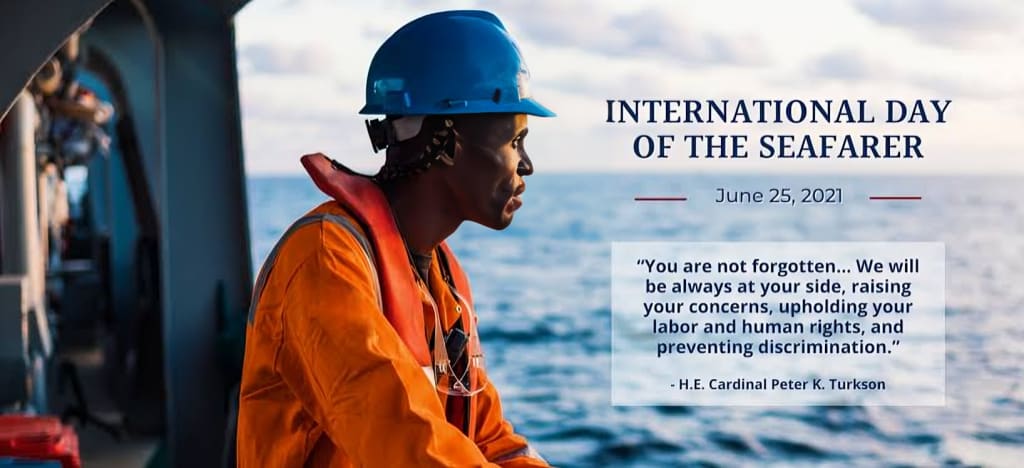The Remarkable Rescue of Filipino Seafarers: A Testament to Maritime Solidarity
Bravery and Brotherhood: The Rescue Operation of Filipino Seafarers in the Red Sea

On June 15, 2024, the maritime world witnessed a dramatic and heartening rescue operation involving Filipino seafarers whose vessel was attacked by Houthi rebels in the Red Sea. This incident has highlighted the perils faced by seafarers, the resilience of the Filipino maritime community, and the coordinated international efforts required to ensure their safety. This article delves into the events leading up to the rescue, the operation itself, and the broader implications for global maritime security.
The Attack: A Perilous Voyage
The MV Alpine, a commercial vessel, was en route through the strategic but perilous waters of the Red Sea when it came under attack by Houthi forces. These waters, a crucial artery for global maritime trade, have been a hotspot for pirate and militant activities, putting countless lives and billions of dollars' worth of cargo at risk.
The attack on MV Alpine was sudden and brutal. Armed men in fast boats approached the vessel, firing indiscriminately. The crew, predominantly Filipino, followed emergency protocols to secure the ship and alert international maritime authorities. The vessel sustained damage, and panic ensued as the crew sought to avoid capture or worse.
Immediate Response: A Race Against Time
Upon receiving the distress signal, the Philippine government, through its Department of Foreign Affairs (DFA) and the Department of Migrant Workers (DMW), sprang into action. The incident was immediately communicated to international partners, including the United Nations, and the naval forces operating in the region were notified.
The Philippine Embassy in Riyadh and the Philippine Consulate General in Jeddah coordinated closely with local authorities and the vessel’s operating company to ensure the crew's safety. The ship's captain, maintaining composure under immense pressure, managed to keep the attackers at bay long enough for rescue operations to be mobilized.
The Rescue Operation: Coordinated Efforts at Sea
The rescue operation was a testament to the effectiveness of international maritime cooperation. Navies from several countries, including the United States and the United Kingdom, have a constant presence in the region to safeguard commercial shipping lanes from such threats. On this occasion, a multinational task force responded swiftly to the distress call.
A nearby naval vessel, part of the Combined Maritime Forces (CMF), was the first to reach MV Alpine. Helicopters were deployed to provide aerial surveillance and deterrence, while heavily armed boarding teams prepared for a possible confrontation. The presence of naval forces acted as a strong deterrent, causing the attackers to retreat.
Within hours, the situation was brought under control. The boarding teams secured the ship, ensuring all crew members were safe. Twenty-one Filipino seafarers were rescued, and immediate medical assistance was provided to those who had sustained injuries during the attack.
Aftermath: Safe Haven and Repatriation
Following the successful rescue, the seafarers were taken to a secure location where they received medical care and psychological support. The Philippine government, in coordination with the ship’s operator, arranged for their repatriation. Philippine Ambassador to Saudi Arabia, Adnan Alonto, emphasized the priority given to the welfare of the seafarers and praised the swift international response.
“This rescue operation underscores the importance of vigilance and cooperation in ensuring the safety of our seafarers,” said Ambassador Alonto. “The bravery and professionalism of the crew, combined with the rapid response of international naval forces, prevented what could have been a major tragedy.”
Broader Implications: Maritime Security and Policy
This incident has broader implications for maritime security and the policies governing the safety of seafarers. The Red Sea and adjacent regions are critical maritime routes that facilitate a significant portion of the world's trade. Ensuring their security is paramount, not just for economic reasons but for humanitarian concerns as well.
1. Enhanced Security Measures:
Following the attack, there are calls for enhanced security measures on commercial vessels, including the deployment of armed security personnel and advanced surveillance systems. Shipping companies are urged to adopt best management practices to deter and respond to pirate attacks.
2. International Cooperation:
The successful rescue highlights the importance of international cooperation in maritime security. The role of multinational naval task forces cannot be overstated. Continued support and funding for these initiatives are crucial in maintaining the safety of maritime routes.
3. Training and Preparedness:
The incident also underscores the need for comprehensive training for seafarers. Regular drills and updated training on handling piracy and armed attacks are essential. The bravery of the Filipino crew, in this case, is a testament to the effectiveness of their training and preparedness.
4. Legislative and Policy Frameworks:
Governments and international bodies must work towards strengthening the legislative and policy frameworks that protect seafarers. This includes ensuring that legal avenues are available to prosecute those involved in piracy and maritime terrorism.
5. Support Systems for Seafarers:
The psychological impact of such traumatic experiences on seafarers must not be overlooked. Comprehensive support systems, including counseling and medical care, should be readily available for affected individuals.
The Human Element: Stories of Courage and Resilience
At the heart of this incident are the individual stories of courage and resilience. The Filipino seafarers, who have long been the backbone of the global shipping industry, once again demonstrated their fortitude in the face of danger. The crew of MV Alpine showed remarkable bravery, following protocols and maintaining their composure during the attack.
One of the seafarers, First Mate Jose Santos, shared his experience: “We knew we had to stay calm and follow our training. It was terrifying, but we trusted that help would come. The sight of the naval helicopters was a huge relief.”
The emotional toll on the families of the seafarers cannot be understated. The anxiety and fear they endured during the attack and the subsequent relief upon hearing of the rescue were palpable. The Philippine government has assured continuous support for the families, acknowledging their sacrifices and resilience.
Conclusion: A Call to Action
The rescue of the Filipino seafarers from MV Alpine is a powerful reminder of the dangers faced by maritime workers and the critical importance of international cooperation in ensuring their safety. It is a call to action for all stakeholders in the maritime industry to prioritize the welfare and security of seafarers.
As global trade continues to rely heavily on maritime transport, the safety of those who operate these vessels must be paramount. The bravery of the Filipino crew, the swift international response, and the coordinated efforts of various naval forces serve as a blueprint for addressing similar threats in the future.
In conclusion, while the rescue operation was a success, it also highlights the ongoing challenges in maritime security. Continuous efforts, both at the national and international levels, are essential to safeguard the lives of seafarers and ensure the safe passage of ships across the world's oceans.
About the Creator
Enjoyed the story? Support the Creator.
Subscribe for free to receive all their stories in your feed. You could also pledge your support or give them a one-off tip, letting them know you appreciate their work.





Comments
There are no comments for this story
Be the first to respond and start the conversation.